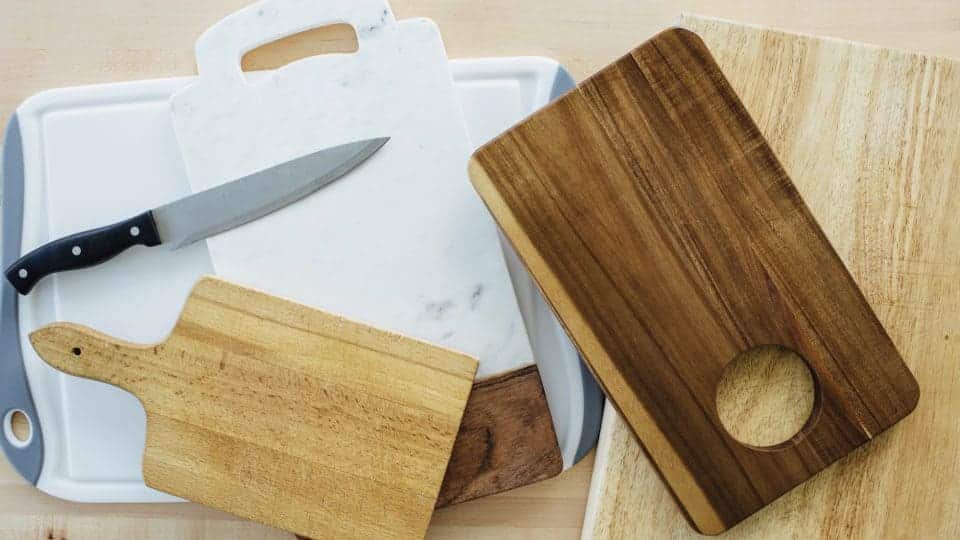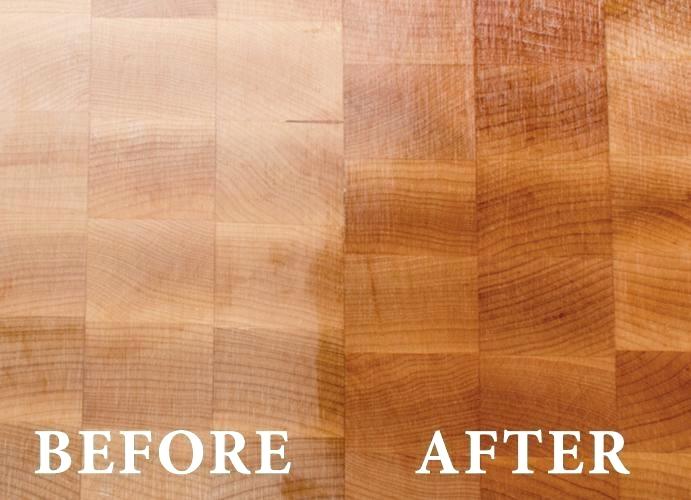How to Care For Your Wood Cutting Boards

As SF Bay Area Private Chefs, we visit thousands of our clients homes annually. Many have spent really good money on gorgeous expensive solid wood cutting boards, only to not properly maintain them and they quickly fall into disrepair by looking old, cracked, warped, and then inevitably end up in the trash prematurely.
Maintaining a cutting board is a quick and very painless process, that will keep your wooden cutting board not only sanitary, but also looking new, and greatly extend its useful service life.
So....
How to properly maintain wood cutting boards:
Washing and Cleaning Instructions For Wood Cutting Boards
Always wash your wood cutting board with soap and warm water and scrub it well. The volume of water across the grain and the physical act of scrubbing the board is important. It flushes bacteria and other food particles off the board to help sanitize it and keep it bacteria-free. Public health authorities always recommend the use of soap!
TIP: Avoid the use of heavily scented dishwashing soaps, unscented is always best! Also never use hand soap on your cutting board. Use dishwashing soaps like Dawn Professional, or Dawn Powerwash can help quickly clean, sanitize, and degrease your wood cutting board.
After washing the wooden cutting board, dry it immediately with a clean kitchen towel that has not been used for drying or washing any other dishes. Fresh out of the laundry (without the use of fabric softener, is always best!)
After towel drying, let the cutting board air dry standing up, or on a raised rack with airflow on all sides. This isn't the time to lay your freshly washed board on a dirty dish towel or countertop that could potentially harbor moisture or bacteria.
Never, Never, NEVER put wood cutting boards in the dishwasher!
Dishwasher heat and water will warp and splinter wood AND void warranties. Only certain types of plastic, composite, or glass boards should go into the dishwasher, check the manufacturer's directions that came with your cutting board for dishwasher-safe compatibility. Never dunk or let any wood cutting board stand submerged in water for any length of time. Wood will absorb water quickly, and cause potential warping of your board.
Never use chlorine bleach or cleansers containing chlorine or bleach. These chemicals will stain the wood, and dry it excessively. Never put a wet board flat to dry. If the board dries unevenly only on one side, it will cause the wood to warp.
How to get smells off a wood cutting board?
If your wooden cutting board has food stains or just smells funky or off, you can easily fix this by using a couple of tablespoons salt and then scrubbing all sizes of the board with a cut lemon. If you don't have a lemon, you can achieve similar effects by giving it a good scrub with distilled white vinegar and salt. The acid in these liquids will neutralize the organic compounds, food fats, or bacteria that may be causing the staining or it not to smell daisy fresh.

How to apply cutting board cream or oil:
Once your wood cutting board is thoroughly scrubbed clean and air dry, apply a good quality cutting board oil or cream directly onto the surface of the board. We always suggest using John Boos Cutting Board Care Products! Be overly generous with the application, especially if the wood appears to be dry, or you've just bought the cutting board or butcher block.
You want the wood to be dripping wet with oil on all sides. You can use a paper towel, or a brand new never used before paint brush, to spread the oil or cream. Avoid using your hands, as may lead to splinters, Ouch!
Always, let the oil or cream wooden cutting board conditioners soak into the cutting board for as long as possible; at least a minimum of 4 hours or but overnight is always best if all possible. Blot any remaining oil up with a clean paper towel after your soak time has been completed.
Let your wooden cutting board sit on a coated wire rack or upright in your dish rack, to dry when done. If you are restoring or seasoning an old, dry or new cutting board, you may wish to repeat this process two or even three more times, allowing 24-48 hours in between each application, to ensure your cutting board is completely seasoned. Keeping the wood properly oiled adds to it's durability and longevity.
To apply board cream, wait until the board is dry to the touch after washing or oiling, then apply a small amount of cream onto the board. Using a soft cloth, buff the board cream/wax into the wood in a circular pattern, forming a thin coat. Repeat over the entire surface of the board and especially the sides. It's not necessary to let the wax soak into the board.
Why use wood oil or cutting board conditioner creams?
The ultimate goal of oiling your board is to penetrate and saturate the wood fibers. This helps stop any other liquids (blood, bacteria, dirt, and other icky) and most importantly moisture from soaking into the board. As well, a well-oiled cutting board will keep the same shape when the wood fibers are saturated. Warping is a very common user caused damage to a board when fibers are left too dry, then exposed to water.
Whenever you use soap on your cutting board, which should be every time you wash it! Soap strips the natural oils and moisture out of the wood grains. By using a good quality cutting board oil or cream, you will help rehydrate the wood which will extend its service life and provide for a smoother cutting surface.
Do remember that all wooden, even "no maintenance" or bamboo cutting boards need to be oiled at least once a month!
Always Use Food Grade Oils & Creams
Manufacturers do not recommend natural oils such as vegetable, corn, olive, peanut, or walnut oil, as these are rich in fats that will easily oxidize and go rancid! This creates a foul-smelling board loaded with nasty bacteria. Also, never use standard mineral oil from a hardware store that is not rated as "100% food safe" on the label, as that is meant for machine lubrication and not for contact with food. It is never ever worth jeopardizing your health for a few dollars! Boos Board Oils and Creams are food safe!
Remember to keep them clean, keep them oiled, and they will give you many happy years of cooking!
Check out some other AWG Private Chefs recipes & Easy, Effortless Entertaining ideas!
- The World's Best Salted Caramel Recipe
- Sweet & Spicy Traeger Smoked Pork Belly Recipe
- How to Clean and Prepare your Grill Before A Party
- Chef's List: 10 Must Have Items for Every Home Kitchen
About the Author:
Certified Master Chef Sean Andrade is Executive Chef/Owner of AWG Private Chefs, named the #1 Private Chef company in California. Chef Sean has worked in the restaurant and hospitality industries worldwide for more than 25 years. His company AWG Private Chefs offers highly custom tailored, bespoke private chef dining experiences, select location meal delivery, and event catering in over 30 countries around the globe.